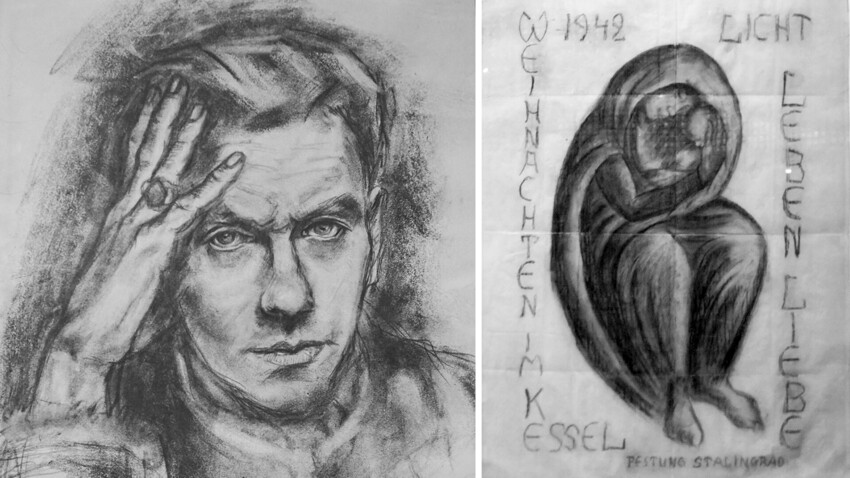
German man Kurt Reuber first became a pastor, then a doctor and was conscripted into the Wehrmacht in the Fall of 1939. In the army, he began to paint and happened to go through a serious mental transformation. Finding himself in the midst of the worst bloodshed in human history at Stalingrad in 1942, Reuber drew the Madonna and Child with charcoal on the back of a school geographical map and put the following inscription round her image: “Light. Life. Love.”
Born into an evangelical family in 1906, Kurt Reuber, at his parents’ insistence, received a spiritual education and became a priest in the village of Wichmannshausen near Hessen. Yet, as a child, Kurt had dreamed of being a doctor and, so, already after his consecration, he got a medical education and, in the Fall of 1939, he was conscripted into the Wehrmacht.
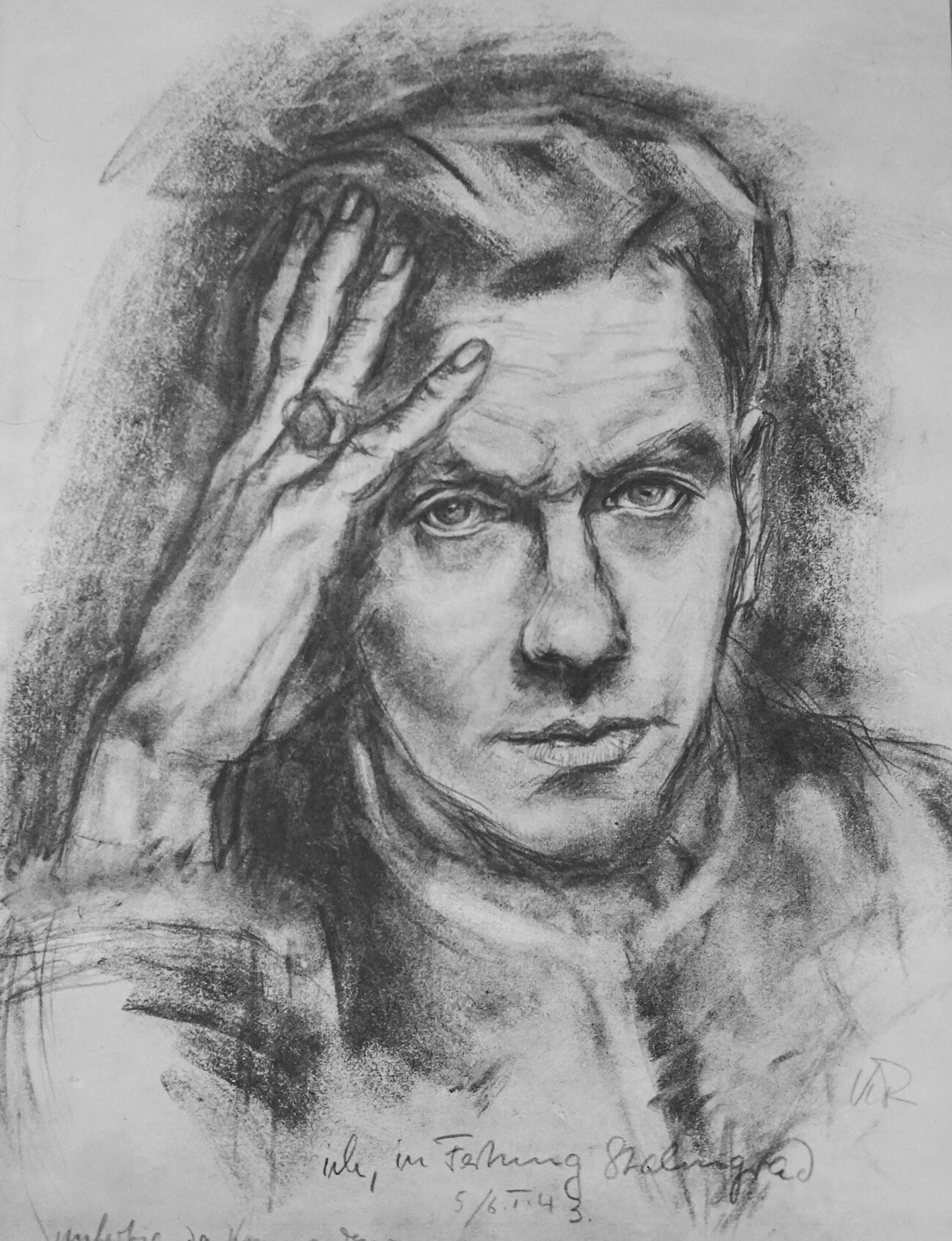
Kurt Reuber, self portrait.
Public domainIt is not known whether Reuber was a proven Nazi. His views, like those of many Germans, changed over the course of the war. In 1941, he wrote home that the Soviet army would soon be defeated and dubbed the population of the occupied territories “a gray mass without human dignity, which has no energy for renewal”. But, only a year later, the medic began to think differently: “I met wonderful people <...> So many streams of blood and tears, terror of soul and body rolled through this country…”
In the Fall of 1942, Reuber received a leave of absence, but he was recalled back to his military unit two days before the German troops were encircled. Reuber and his fellow soldiers, thus, found themselves in the epicenter of the bloodiest battle in the history of mankind - in Stalingrad. According to various estimates, around 2.5 million people were killed, wounded or went missing on both sides in this bloodshed (Germany and its allies lost about 1.5 million, including those taken captive).
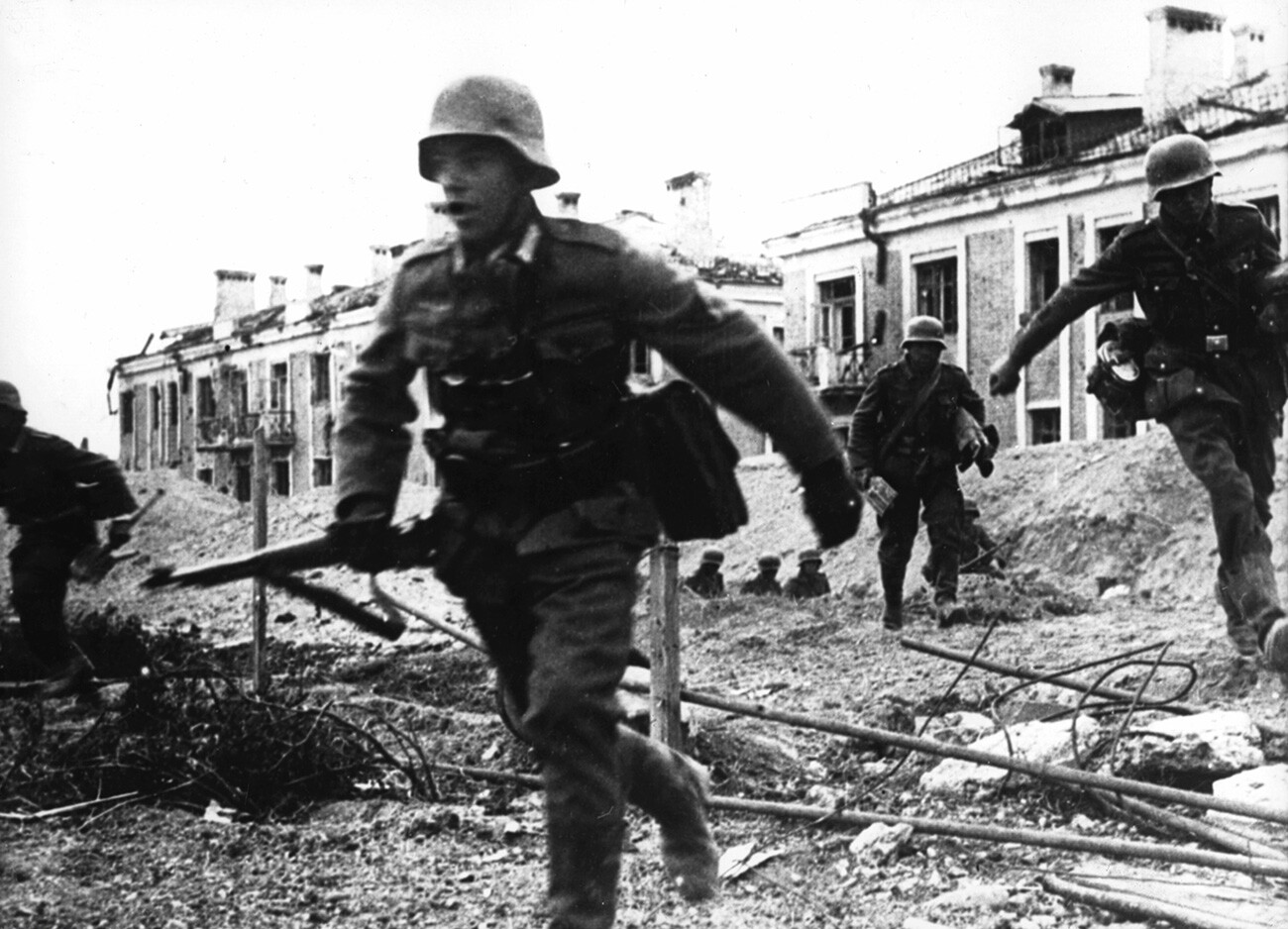
German army in Stalingrad.
Getty ImagesDuring the war, Kurt made more than 150 drawings. But, the most famous one appeared in Stalingrad, on the eve of Catholic Christmas in 1942. It’s a simple charcoal drawing on the back of a school geographical map: the Madonna, completely shrouded in a veil, holds the infant Christ in her arms. “When the door opened and my comrades entered, they stopped as if frozen in awe-struck silence, amazed at the picture hanging on the earthen wall, below which a light was burning on a log driven into the earthen wall. The whole Christmas holiday passed under the impression of the picture and the words framing it: light, life, love,” he wrote in his diary.
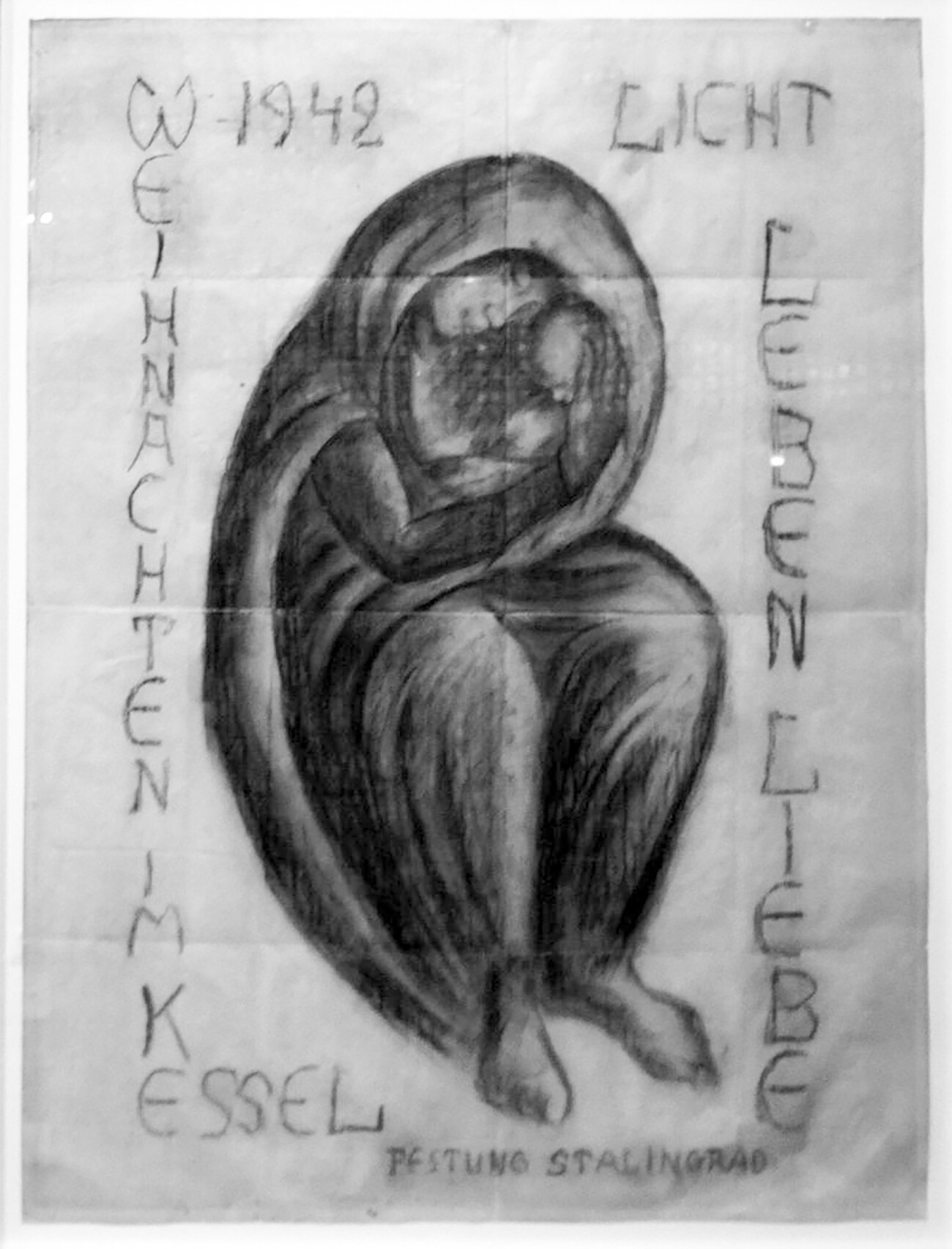
After the Soviets had Stalingrad circled, the Germans continued to receive aid from the air and a number of soldiers were even evacuated. Among the evacuees was a wounded colleague of Reuber, to whom the artist had handed over the drawings. The doctor’s family, to whom his works were given, eventually donated them to the Kaiser Wilhelm Memorial Church in Berlin. The ‘Stalingrad Madonna’ still hangs there and a copy of it was donated to the Catholic Church of St. Nicholas in Volgograd (formerly Stalingrad).
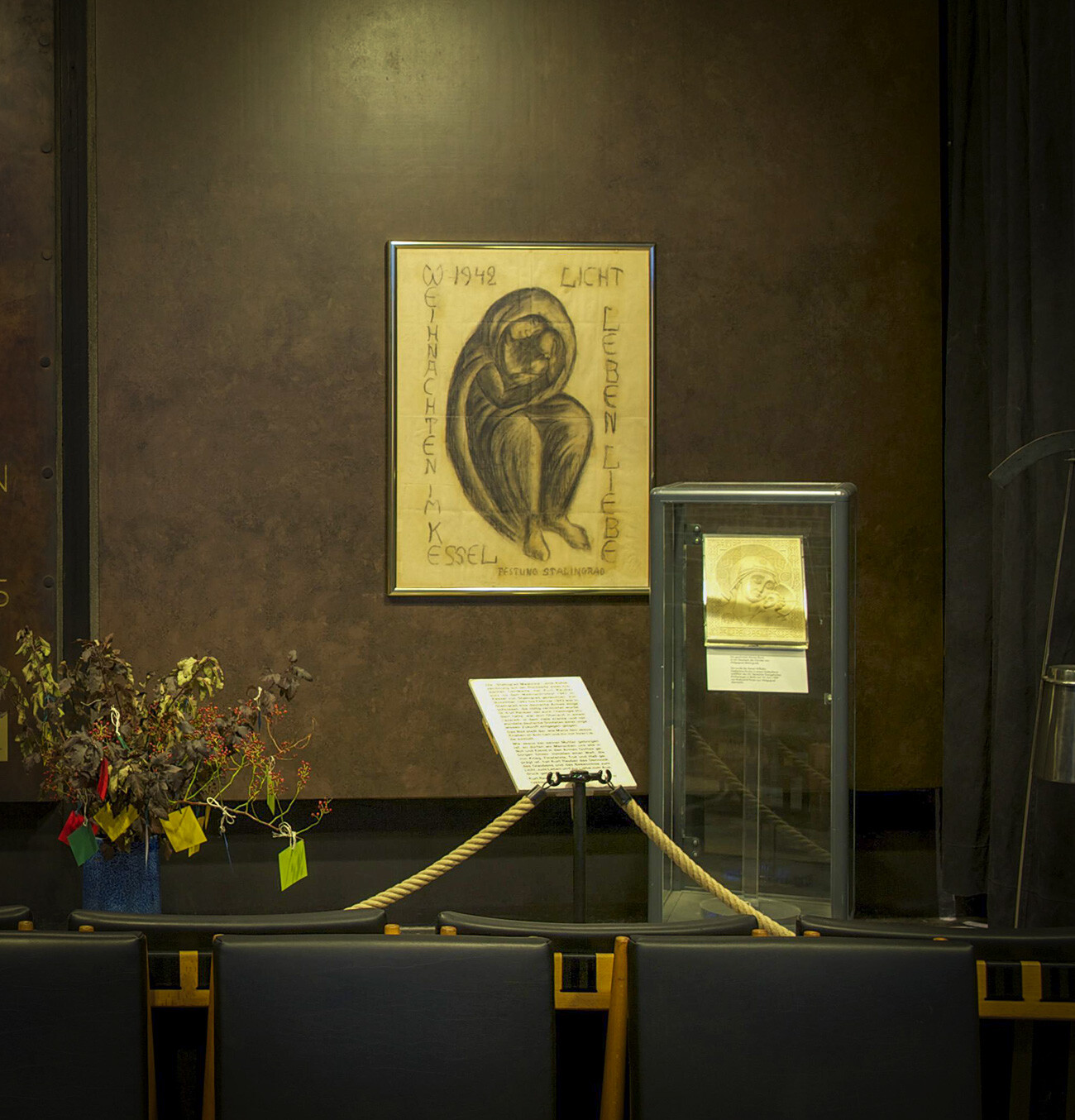
Dear readers,
Our website and social media accounts are under threat of being restricted or banned, due to the current circumstances. So, to keep up with our latest content, simply do the following:
If using any of Russia Beyond's content, partly or in full, always provide an active hyperlink to the original material.
Subscribe
to our newsletter!
Get the week's best stories straight to your inbox